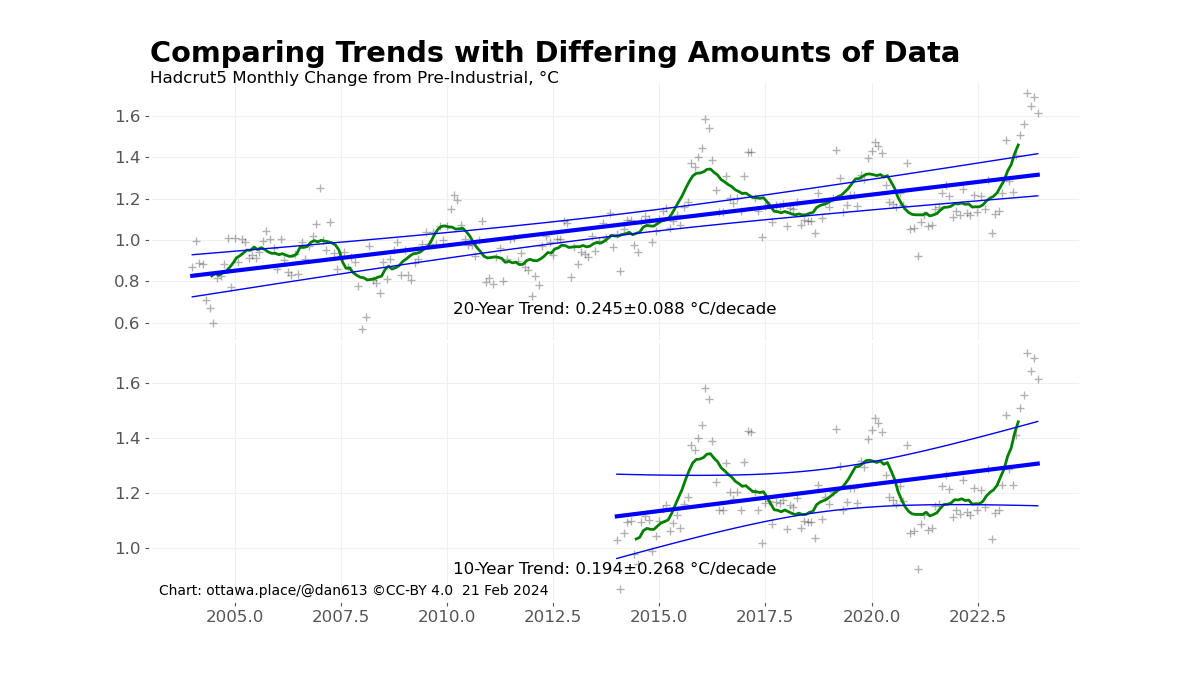Is Global Warming Accelerating? No.

Tomino over at Open Mind discussed the possibility that global mean temperature trend has recently started to accelerate. Although he shows a change in warming trend starting from 2013, he did not calculate how likely this is.
When calculating a trend, you are really just making an estimate. With a least square fit, you are finding the line that minimizes the average squares of differences between the data and the line. The data has a certain amount of variance from this line, and the more variance there is, the more likely there is error in calculating the trend.
Foster and Rahmstorf (2011) developed a method of determining this error which takes into account the autocorrelation of the data. You can also look at an interactive tool over at Skeptical Science or at Professor Kevin Cowtan’s site at the University of York. If you apply it to the data from 1980 onwards, you get the following:

I’ve chosen to use monthly data to avoid arbitrary demarcations, and this is the raw data from Hadcrut5, rather than adjusted to remove natural influences such as El Niño and volcanic activity. With over 500 data points, this provides a fairly well-defined trend. But using fewer points means you are averaging fewer differences, leading to more variation in the likely trend. For example, finding the trend over the last 20 years or the last 10 years results in different trends and range (I’m using the 95% confidence range in all charts).

Even though these two sets of data give different trends, the range of likely trends fits within both confidence ranges. Another aspect is where you choose the start and end points. Starting when temperature is higher than the local average will give a lower trend than starting with a temperature is lower than the local average. Similarly for the end points. So one could choose a point that maximizes the difference between the trend before this point and the trend afterwards. However the choice of point also affects the confidence range.
My final chart looks at what happens when you check every data point to see what the slope of lines before and after that point turns out to be. Since the confidence ranges are also calculated, a statistically likely difference is a point where the ranges do not overlap.

I truncated the dates investigated by five years at the start and end of the data so that there would be a reasonable amount of data for the lines at each side. As you can see, except for a brief span in the ’80s, the confidence ranges of the slopes before every date overlaps the ranges of the slopes afterwards. This means there could be a slope within the overlapping ranges that are within the confidence ranges for both sets of data.
Note again that I did no remove natural influences from this data, which tends to move the data closer to the trend line. Even so, the data shows that it is unlikely that there is a temperature acceleration. And when the next La Niña occurs, I expect the concern will be over.
Of course, we still have the concern of an ever-increasing temperature. Just not an accelerating one.
Note: The data and programs I used to create these charts are over at my Github page. plotRate has the plotting routines, whereas the Trend.py module has the calculations.

Leave a comment